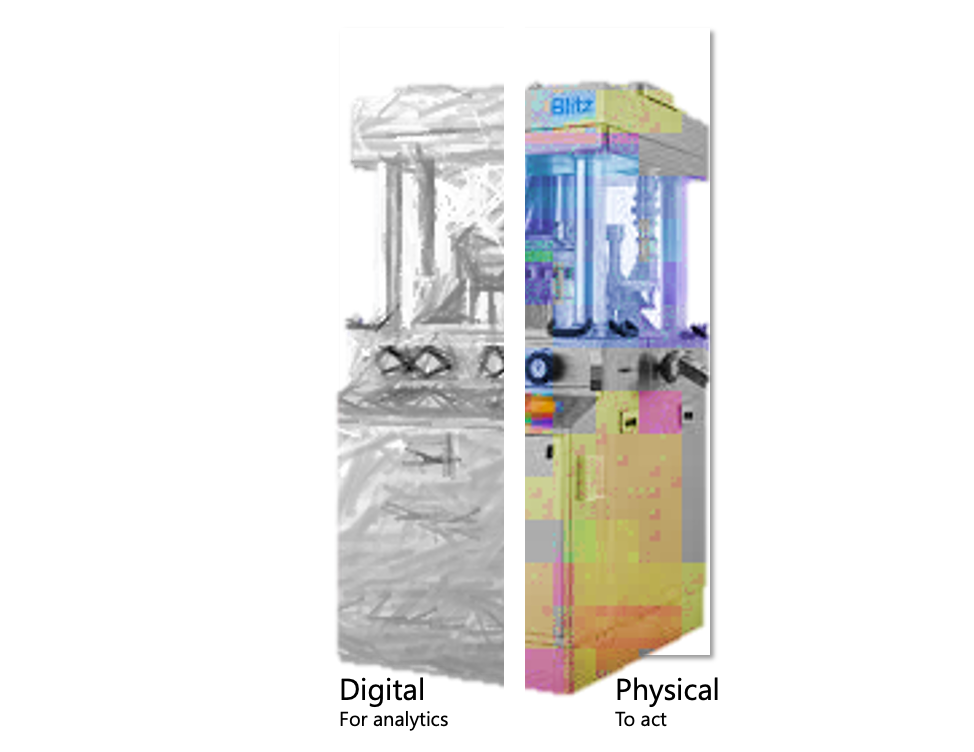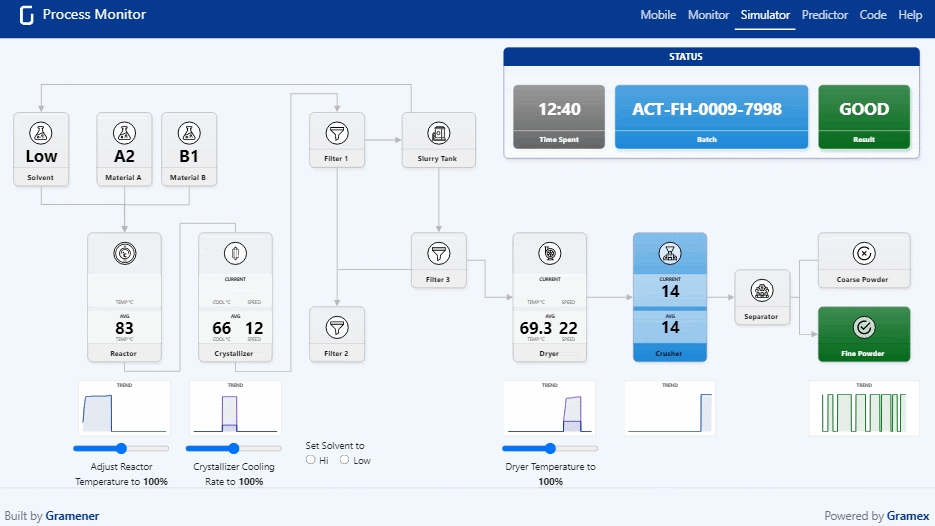The emergence of several ground-breaking technologies in recent years has been phenomenal. These technologies have promoted the development of smart manufacturing. One of them is the digital twin. It is rapidly changing the way the manufacturing industry works. The concept has been there for a long time, but its implementation across a product lifecycle is new. In this article, we take a look at the digital twin in manufacturing and how it brings about a change.

Table of Contents
What is Digital Twin Technology?

A digital twin virtually represents a real-world asset or product. The digital twin architecture goes much beyond just showcasing the model of the object. Digital twins can receive live data from objects continuously with the help of IoT sensors. Digital twin in manufacturing aids in monitoring the asset virtually and improving situational awareness.
Planners can make predictions to foresee maintenance issues and improve asset performance. Digital twins can manage the functioning of assets like manufacturing machinery, including machines and plants. Asset management becomes much simplified with the addition of analytics, IoT, and advanced visualization. Digital twins and predictive analytics in manufacturing are two disruptive innovations that can help companies improve their processes and operations.
According to a survey, the digital twin market size was more than USD 4 billion in 2019. It will continue to grow at a CAGR of more than 30% till 2026. Here are some industries enjoying success with digital twin applications.
Engineering
Digital twins have traditionally found their use to represent a product virtually. However, with the changing times, digital twins are now coming out before their actual physical counterparts. In many ways, it presents a vision of how the object should be. Capturing data from products for improvements becomes possible with the help of IoT innovations.
Production
With the help of a single set of master data related to digital twins, manufacturers can check and visualize data quickly. It also becomes possible with the addition of computing-based networks and model capabilities. When there are multiple products, you can also compare the data quality with the help of digital twins.
Design Customization
Digital twins aid the creation of customized products through several permutations. The incorporation of customer feedback into manufacturing processes was tough in the past. But digital twins make it seamless to incorporate data and meet customer demands.
Operations
Manufacturers can represent assets virtually and gather data from IoT sensors. It helps manufacturers get the best view of the actual performance and operating scenarios. There is also an added advantage of predictive maintenance.
Let us now take a look at the digital twin in the manufacturing industry and how it helps.
Find out the use cases, examples, and Solutions of Digital Twin
Digital Twin Technology Overview Guide
How Does a Digital Twin Help In The Manufacturing Industry?
The physical assets in a factory have IoT sensors to collect data and transfer it to the digital twin. This communication helps in improving the asset performance for better results. The other benefit of the digital twin in manufacturing is that manufacturers can create the twin before the construction of the physical asset.
A digital twin in manufacturing can deliver a lot of insights with the help of analytics. Manufacturers can avoid unexpected downtimes and improve asset performance with information received from IoT sensors. The information synchronization also happens on a real-time basis between the assets and their digital twins. It is one of the best applications of the digital twin in manufacturing.
Here are some other benefits of the digital twin in manufacturing.
- Understand products better through real-time monitoring at the same time when they are used by customers
- Maintain the assets better through predictive maintenance
- Optimize manufacturing processes
- Test, validate, and refine assumptions
- Improve integration between unconnected systems
- Improve product traceability functions
- Troubleshoot equipment remotely
Example of Digital Twin in Manufacturing Process
While there are several digital twin manufacturing examples, here is one from the solutions we created for our client. A pharmaceutical client wanted to monitor the organic synthesis process in their factory. It would enable them to predict the quality standards of tablet production.
Gramener created a machine learning solution to set alerts that operators can use to check dipping quality standards. Here is a complete overview of one of our digital twin manufacturing examples.
- It is a solution created with Gramex low-code platform.
- The creation of a low-code machine learning platform enabled us to monitor each aspect of the organic synthesis process.
- The model had the capability to use data related to reactor temperature, crystallizer cooling rate in real-time.
- We offered the application in floor layout with multiple versions. These include Mobile Alert, Floor Monitor, Predict Quality, and Simulator.

Our machine learning model helped the client predict the batch quality during the production stage. There was a provision to change and improve the settings for better production standards. Depending on the fineness of the powdered material, the model would predict the quality. If 90% of the particles were fine, the product batch would be of good quality.
Also Read: How Open Source Low Code Platforms are Building Enterprise-Grade Data and AI Applications.
Role of Data in Digital Twinning
A digital twin in manufacturing can collect several types of data. All of the data collected ultimately helps in predicting better outcomes. Here are some examples of what data gets collected by the digital twin in manufacturing.
- Past data: It includes the performance data related to individual assets, systems, and processes.
- Present data: There is data related to equipment sensors and system outputs on a real-time basis. There can also be output data related to systems in other business units like purchasing.
- Future data: It includes data related to machine learning and inputs from professionals.
Applications of a Digital Twin
Here are some applications of digital twins across various industries.
Digital Twin in Healthcare
IoT data and digital twins can help healthcare firms with benefits like patient monitoring, cost savings, personalized assistance, and preventative maintenance.
Digital Twin in Retail
With the increasing need to deliver the best customer experiences, digital twins can be an ideal solution. They can help create virtual twins for customers to manage the experiences of real customers better. There are also other advantages like better store management, energy management, and security.
Digital Twin for Smart cities
Planners can use digital twins when planning and implementing the smart city concept as it offers numerous benefits. Some of these include resource management, enhanced economic development, and reduced ecological footprints. All of this ultimately improves the quality of life of people. Systems and sensor networks are ideal for planners to capture data for better planning. It also helps in making data-driven decisions for the future.
Digital Twin in Industrial IoT
Industries can monitor and manage their assets virtually with digital twins. Besides capturing data related to operations, digital twins also collect environmental data. It includes location, financial models, and much more. It thus helps in predicting the future course of operations.
Bottomline
Digital twin in manufacturing processes is redefining the processes and systems for better results. The technology has several benefits, both on a short-term and long-term basis. As it is a fast-growing and evolving technology, you can reap its benefits for years to come. If you are looking for that competitive edge, a digital twin could be a step in the right direction.
Contact us for custom built low code data and AI solutions for your business challenges and check out digital twin solution built for our clients, including Fortune 500 companies. Book a free demo right now.

![Digital Twins for Smart Manufacturing With Data [Examples & Applications]](https://blog.gramener.com/wp-content/uploads/2021/05/Digital-Twins-for-Smart-Manufacturing-With-Data-Examples-Applications-1200x628.jpg)
Digital twins for smart manufacturing in healthcare and retail is the key to success. Thanks for sharing this information.